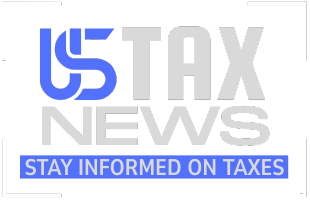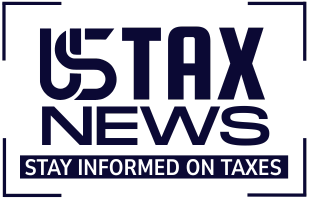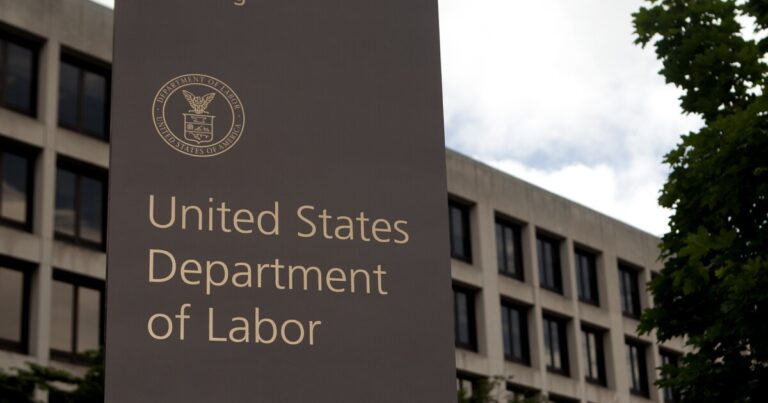Poor response rates used to compile vital U.S. economic surveys have some pitching an unconventional solution: paying respondents to answer questions.
It’s one of several ways economists have proposed the Bureau of Labor Statistics strengthen its data collection and compilation. Others include allowing it to use certain Internal Revenue Service business records and leaning harder on private data and artificial intelligence.
There’s no simple solution for the statistical agency, which has long been trying to boost waning response rates among households and businesses. Skepticism about the accuracy of government statistics has been festering in recent years, but reached a fever pitch when President Donald Trump fired the head of the BLS this month after the agency said job growth in recent months was dramatically weaker than previously reported.
While many of the possible approaches are unorthodox or costly, and would take months or even years to implement, there’s broad agreement the BLS must consider changes to improve America’s economic data.
Here’s a few of those proposals:
Incentives
Using incentives, including paying cash for participation, may be gaining traction after one of the president’s top economists acknowledged their possible use. It’s not a new idea. Years ago, the government conducted several experiments to determine the impact on responses, and some showed promise, according to a BLS paper.
“I think that we can start thinking about incentive schemes to drive response rates higher,” Stephen Miran, chair of the White House Council of Economic Advisers and Trump’s pick to fill a vacated seat on the Federal Reserve Board of Governors, said Aug. 12 on CNBC.
Still, some economists see risks of sampling bias that favors people who are idle or short of cash. It could also be expensive at a time when Trump is seeking to trim the size of government.
Erica Groshen, the BLS commissioner for four years in the 2010s, worries that incentives could bias the sample of respondents, and they could be problematic if some people are compensated and others aren’t.
Response rates for the BLS household survey, which is used to calculate unemployment and labor force participation, have fallen below 70% since late last year. That’s well below the roughly 90% seen a little more than a decade ago. Each month, about 60,000 households are contacted by telephone or personal visit.
“You’re being contacted by strangers, when everyone hates being contacted by strangers,” said Ron Hetrick, a former BLS economist now with the workforce consulting firm Lightcast. He added that “money would certainly help. Modernization would certainly help.”
The BLS’s monthly survey of businesses, which it uses to estimate job totals, has also seen initial monthly responses slip to less than 60% all too frequently over the past couple of years, the agency’s data show. A decade ago, the first collection rate was close to 80%.
That data, which was at the center of Trump’s frustration earlier this month, appears to also be a focus for his new choice to lead the agency. Before he was picked, EJ Antoni said the BLS should suspend the monthly jobs report “until it is corrected.”
IRS records
Another option that has long been floated to enhance not only the BLS establishment survey, but the statistical system as a whole, would be allowing the agency to use certain IRS business records.
The tax agency collects data about new firms created and employee headcount. Those figures could help the BLS keep track of how many workers are being hired when new businesses start up, and how many are let go when firms shut down, Groshen said.
Estimating payrolls of newly opened — or closed — businesses has always been tricky, but a surge of new business formations during the pandemic recovery only made it harder. Some economists said this so-called “birth-death model” was at the root of a 589,000 downward revision to seasonally adjusted employment counts in the year through March 2024.
Still, allowing BLS to use IRS tax records has been a hard sell on Capitol Hill, where elected representatives and congressional staff “nearly never want to deviate from saying no” to expanding access, Groshen said.
Umbrella agency
A related idea to encouraging greater cooperation within government is creating an economic statistics super-agency. The upshot is that it would allow for a more seamless flow of data between the existing agencies. Currently, a substantial portion of official federal statistics is produced by 13 agencies. That’s at odds with some other countries, including Canada with its Statistics Canada, that have a more centralized approach.
In its budget proposal earlier this year, the Trump administration suggested a smaller step — bring BLS under the Commerce Department with the Census Bureau and the Bureau of Economic Analysis.
Frequent benchmarking
Once a year, the BLS benchmarks its payrolls estimate, which is drawn from monthly surveys of about 121,000 establishments and government agencies, to a more robust count gleaned from state unemployment insurance records.
This process is laborious because the BLS has to gather the unemployment insurance records from all the states. Streamlining collection efforts with states has the potential of producing more accurate national payrolls figures. If the BLS benchmarks its employment figures twice a year, it could improve the nation’s job counts, said William Beach, a former BLS commissioner. He estimates that would cost around $25 million a year.
Alternative data
Given the spread of artificial intelligence and alternative data, many are also pushing for the BLS and other federal agencies to embrace new, more modern collection methods than traditional phone calls and surveys. BLS already uses some third-party data for its monthly consumer price index report, including vehicle prices from J.D. Power. And the Census Bureau has not only tapped alternate data sources but also experimented with satellite imagery.
The process for making job estimates is “obsolete and error-prone,” Ray Dalio, the billionaire founder of hedge fund Bridgewater Associates, said in a post on LinkedIn after Trump dismissed the BLS commissioner. Private estimates “were in fact much better,” he said. Dalio declined to comment or clarify what private data he was referring to when reached by phone afterward.


